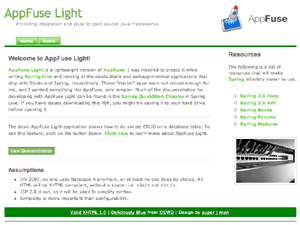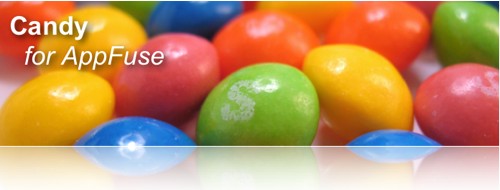I found a good post from Steve Loughran on what's wrong with Maven's repositories. I agree with most of his points, but would like to point out mvnrepository.com. This site seems to provide good XML Feeds for what's been uploaded to Maven's Central Repository. If you're using Maven, you should probably subscribe to its Atom Feed.
In related news, Timothy M. O'Brien has an entry about Steve's upcoming book: Ant in Action. This book is the 2nd edition of Java Development with Ant. I have a hard time believing Erik Hatcher is helping Steve write Ant in Action - AFAIK, he's off in Rails-land enjoying himself. Regardless, I'm sure Ant in Action will be an excellent book. Java Development with Ant is one of my favorite technical books of all time and is largely responsible for inspiring me to write AppFuse. I read JDwA way back in October 2002 and used a lot of its code to develop AppFuse 1.x's Ant-based build system.
Like Tim, I still like Ant. However, AppFuse 2.x uses Maven 2 and most of the projects I work on these days use Maven 2. It may surprise some folks, but I actually like Maven 2 (not Maven 1). Sure it has issues, but after a year of using it in anger, I know how to solve most of its quirks. AppFuse 2.x users will benefit from this greatly and I'm thinking of changing its tagline to "We make Maven work." 
One of the most interesting things about moving to Maven is we were easily able to make AppFuse more like a framework than a project starter kit. We thought this is what most folks wanted - especially the ability to upgrade a project to the latest version of AppFuse. While some folks wanted this, it seems like most folks liked the full-source version that was a pain-in-the-ass to upgrade. I don't blame them. On the project I'm on, I'll likely be converting to a full-source version before the project is over. That's why APF-675 exists. I doubt we'll make it happen for the 2.0 final release, but it is on our radar of things to do shortly after. With any luck, we'll create a way to migrate projects using embedded AppFuse to full-source AppFuse.
I'd also like to point out something ironic. With AppFuse 1.x, there were a lot of folks that advocated we move to Maven. Their primary reasoning - the Ant build scripts were too long and complicated. How about a good ol' lines of XML comparison for those folks:
- Lines of Ant-related XML in AppFuse 1.x: 1655
- Lines of Maven-related XML in AppFuse 2.x: 2847
Oh wait, that's not a fair comparison. The above number is for AppFuse in SVN, which end users won't deal with. A new project created with AppFuse 2.x will likely have a pom.xml with 634 lines. That's about 1/3 of the amount needed for Ant in AppFuse 1.x. Maven hasn't exactly gotten us away from XML hell though. How about a LOC count for archetypes vs. installers:
- Lines of Ant-related XML for AppFuse 1.x framework installers: 2786
- Lines of Maven-related XML for AppFuse 2.x archetypes (including archetype's pom.xml files): Too much to count. Creating archetypes is waayyyy too complicated IMO. Basic archetypes seem to be around 740 lines (pom.xml for archetype project, archetype.xml and archetype's pom.xml), modular archetypes are around 870. 740 x 4 + 870 x 4 = 6440. I'm guessing the full-source archetypes will add another 5000 lines of XML. Ugh.
This XML-for-archetypes comparison might be unfair as well. With 1.x, you could only create a webapp, with 2.x, you can create a modular application and chop off the web-portion if you so choose.
Of course, the real benefits of moving to Maven are elsewhere. We've seen quite an uptick on the mailing list in the last few months. There's tools cropping up and I've gotten quite a few inquiries about training (yes, I do have a 3-day course on Spring, Hibernate, Ajax, Maven and AppFuse). To me, AppFuse 2.x seems more complicated than 1.x, but it seems the community thinks otherwise. Judging from the increased amount of developer activity on the project, developers seem more interested in a Maven-based system too. Then again, we are making Maven work!




